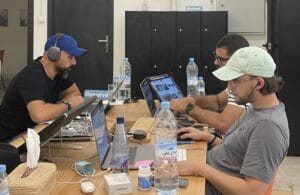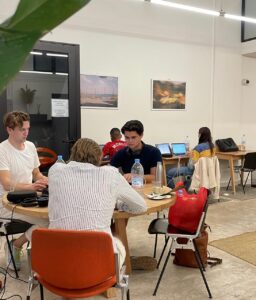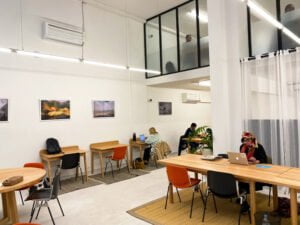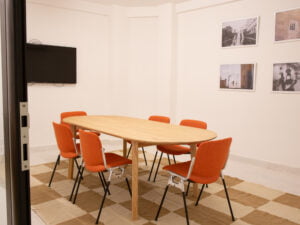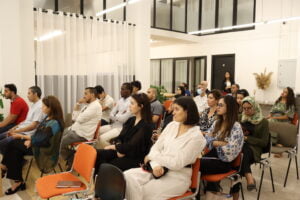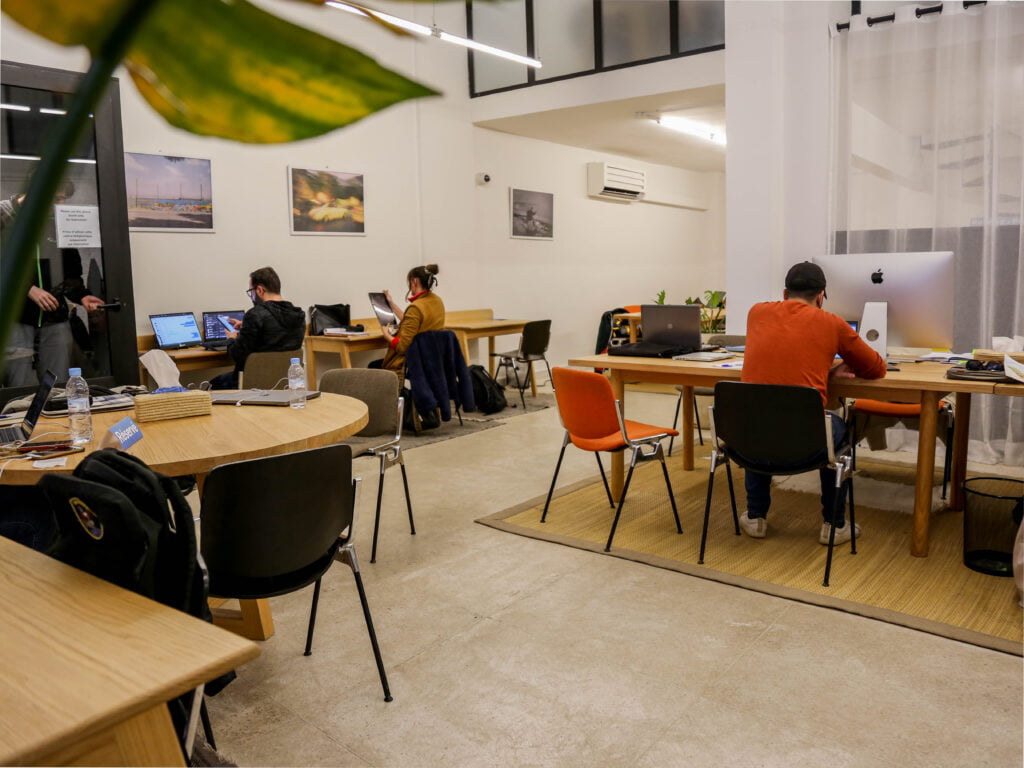
Choosing a physical location for your business is one of the essential parts of setting up a business.
Whatever you do, you need to make sure you’re making the right choice of workspaces.
In today’s office rental market, people have more options than ever when it comes to finding a home for their business.
If you’re a freelancer, a self-employed entrepreneur, a business or an employee in a company, coworking spaces in Marrakech may be more useful to you.
At the same time, companies of all sizes are becoming increasingly aware of other ways of occupying office space.
Even large companies like Amazon and Google are moving some of their offices from traditional leased buildings to flexible workspaces.
This has led to an increase in demand for this type of office, which gives workers greater freedom.
The obvious question is: Will you opt for coworking in Marrakech or a traditional office?
To answer this question, we first need to understand the differences between these two types of space.
To this end, this article will outline what you need to know when comparing traditional offices and coworking spaces.
This will enable you to determine the most appropriate and adequate space for your situation, best meeting the needs of your growing business.
Traditional office space VS coworking space
Both traditional offices and coworking spaces have their own merits and demerits in each of the following five aspects:
The definition of each space, the expenses, the lease contract, the design and the community.
To help you decide which office space is the most satisfying for you and the right practical choice for your work.
The definition of each space type :
Beginning with traditional workspaces, these are the company’s private headquarters.
They are designed to encourage productivity and concentration, with the option of dividing into individual offices in addition to designated conference rooms for group meetings…
The company has total control over all space, technology and other resources.
They are exclusively company-owned, i.e. only company employees use a particular office.
From obtaining an internet connection to finding furniture, from hiring an office manager to equipping the premises, and much more.
Basically, in traditional workstations, every element is a company decision.
To maintain an environment of collaboration and communication…
Spaces are generally equipped with comfortable furniture, shared technologies such as printers and Wi-Fi…
There are meeting rooms and private offices, and often even a cafeteria.
Sharing the workspace is common to both types of space, except that workers in a traditional office are part of the same company.
Whereas coworkers are generally self-employed.
Expenses :
On the one hand, traditional offices cost more, obviously in financial terms, but on top of that, they’re costly in terms of effort.
After all, it’s your responsibility to organize and manage every operating requirement in this type of space.
From space security to stationery storage, every decision, big or small, adds to the office’s running costs.
The hassle of maintenance, contract renewal, parking, etc. is also your responsibility,
Which means it’s still a waste of time to fill them out, or a waste of money to outsource them.
On the other hand, it is remarkable that the majority of individuals choose coworking for two main reasons:
- a supportive community that boosts their sense of collaboration and creativity.
- a highly flexible work culture that fosters well-being and creativity.
It’s fair to say that coworking spaces have become popular, outperforming traditional offices due to the economic advantage.
Joining a coworking space is beneficial and more affordable in terms of time and effort…
In fact, we’d go so far as to say that no effort is required on your part.
With a coworking subscription, you have access to all the conveniences, such as mail management or an always-full coffeemaker.
Lease contract :
We know that a lease contract offers no flexibility, even though it comes with a high initial cost.
Once a contract is signed, in this case the worker is bound to it for a minimum period of two to three years, or even longer.
Although he can freely dispose of all the space he rents…
If his team needs to expand halfway through the contract, the alternatives are either economically prohibitive or simply operationally unworkable.
The same goes for any operational problems you may potentially encounter in the office, such as overpriced rent or lack of security.
However, there’s no such thing as a lease in a coworking space.
The worker can obtain a subscription according to your needs, and you can modify it at any time.
Shared workspaces offer remarkably flexible choices, depending on the subscription you choose.
This makes the job much easier to manage, and saves any company a considerable amount of money.
Design:
Design is a crucial factor in boosting productivity and promoting people’s well-being.
In most cases, traditional office layouts are rarely conducive to creativity and efficiency.
With stubby workstations, posture-impairing chairs, monotonous layouts and poorly lit spaces…
These are generally the characteristics of traditional office design.
These elements certainly reduce productivity; they are simply built to accommodate as many people as possible on a given surface.
The foundation of coworking is collaboration, based primarily on communication between teams.
To achieve this, coworking spaces feature a dynamic, attractive design that encourages comfort, energy and creativity.
The community:
Traditional offices create barriers and obstacles between employees by assigning them fixed individual desks.
Indeed, it discourages communication within the same team, so that the very idea of collaborations and connections between departments is beyond the realm of imagination.
As a result, employees don’t have enough networking opportunities.
And even if they do, these opportunities are limited to the same company they work for, or at most to the same sector.
The main premise of coworking spaces is to build a community of like-minded individuals.
As such, l’blassa, our coworking space in Marrakech, stands out as the best coworking space in Marrakech par excellence,
Thanks to its ability to give people the chance to meet new people from a wide variety of backgrounds and build a strong community.
In the space of five minutes, you can network with a financial expert, a photographer, a computer graphics designer, an artist, a singer, etc.
If you add to this the many events organized at shared workplaces, the possibilities for forming a community increase still further.
